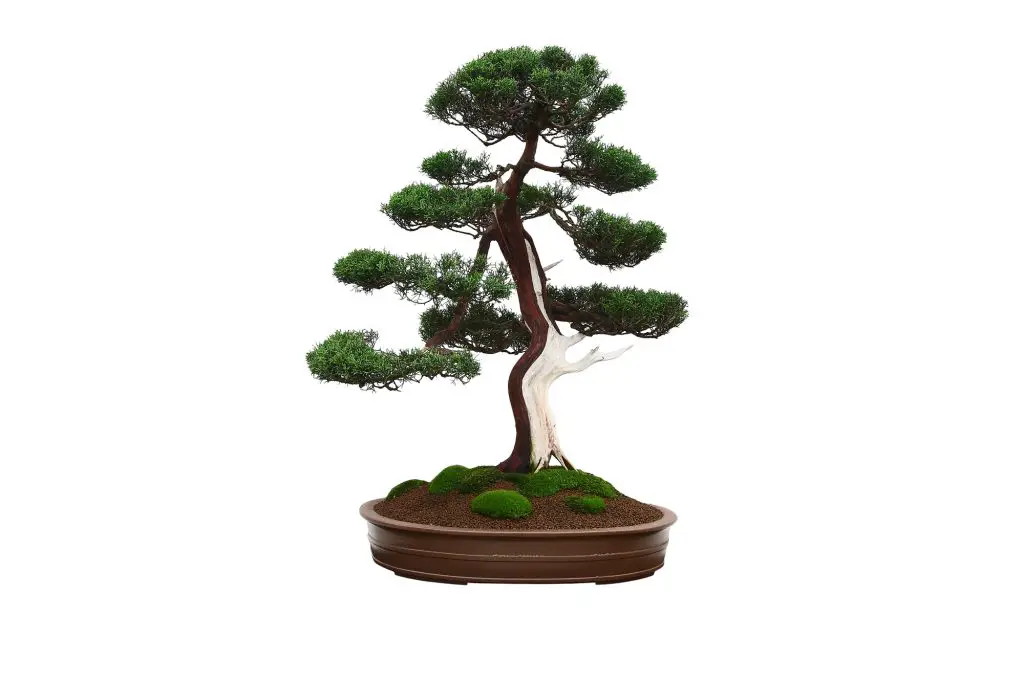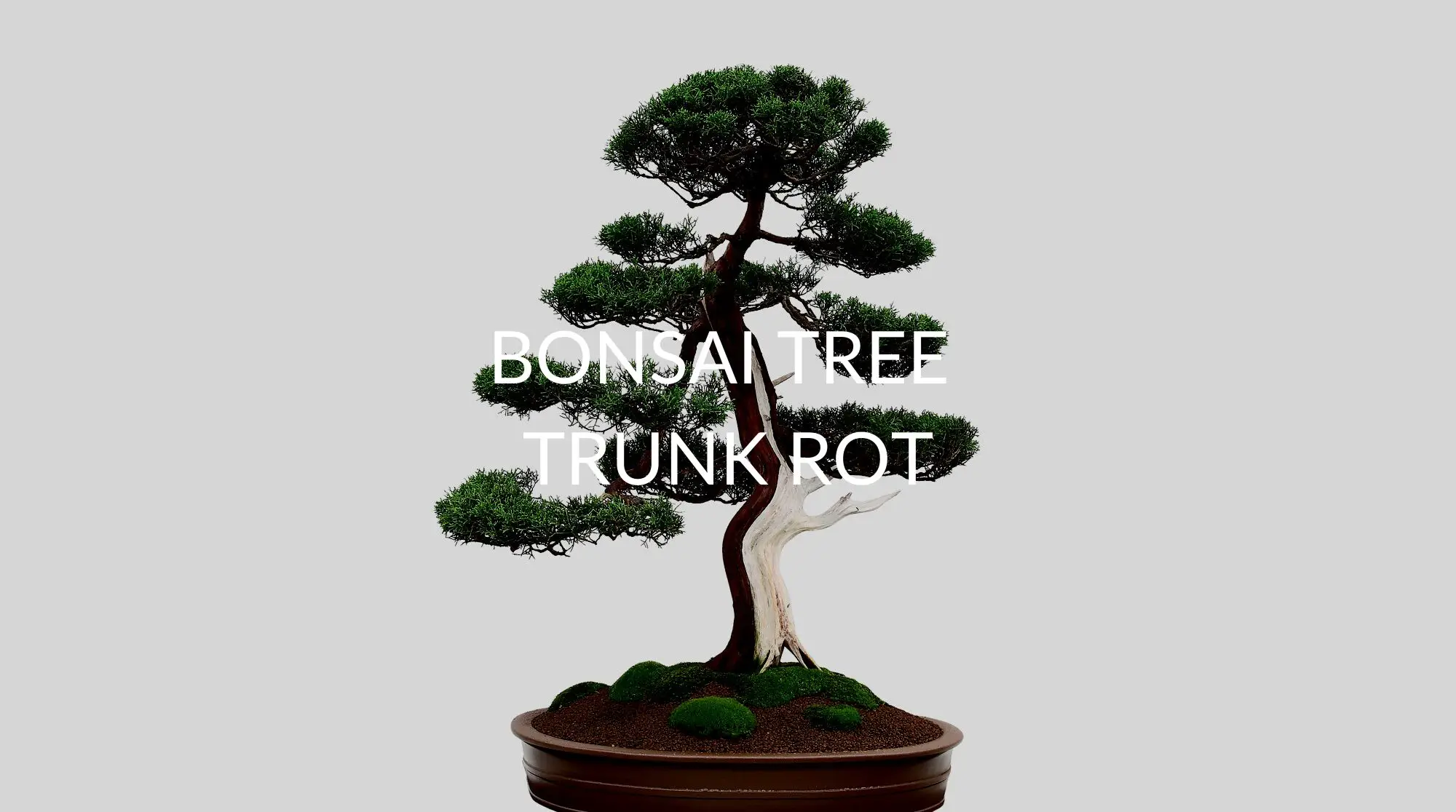While Bonsai trunk rot is a horrible thing to see on your tree, it’s not necessarily a death knell. It typically starts with ‘spongey’ bark and can get worse quickly, but if you know what to look for, then quite often, you can minimize and possibly halt the damage to save your tree.
In today’s article, we’ll tell you more about the signs of trunk rot that you’ll need to know about, as well as how to assess if the tree can be saved and what you can do to try and save it. Let’s discuss recognizing and dealing with Bonsai trunk rot!
Why Is My Bonsai Tree Trunk Squishy?
When the trunk is soft and squishy, then your Bonsai tree is definitely in trouble. Let’s take a look at what might be the cause, and we’ll discuss how to tell if it’s root rot before we go into remediation tips.
You Could Be Overwatering It
Overwatering is the most likely reason why the bark is getting soft. It’s easy to do – sometimes we forget to water our plants and overcompensate when the time comes to do so. This is a huge mistake, but one that is easily avoided (and we’ll expand on this shortly).
You Could Be Underwatering It, Too
While it’s less common, underwatering can also be the culprit, and it puts the plant at risk for a number of other health issues, even a possible pest infestation. Getting the watering schedule to be ‘just right’ can be problematic if it’s your first Bonsai, but it’s going to be vital that you learn to check the soil before every watering to ensure that your plant is not getting too little or too much.
It Could Be Root Rot
When the roots are getting too much water, either from overwatering or from improper or blocked drainage, then the sitting roots can develop a condition called ‘root rot’ that can quickly kill the tree if it’s not noticed. This will definitely cause a sign of squishy bark as a system of this condition.
The Soil Might Not Have Proper Drainage
Bonsai soils always include bits of ‘grit’ for proper drainage. Perlite, gravel, and pumice are a few examples of materials that you will find in most commercial Bonsai soils, and they are there for a good reason.
By ensuring the proper drainage, they make sure that the water isn’t sticking around and ‘wearing out its welcome’.
Air Circulation Might Be Affecting the Water
Heating and AC vents can have an effect on even a perfect watering schedule. If it’s too cool, the air won’t evaporate at a natural rate, and if it’s too warm, then the water can go too quickly. It’s important to check if there is a vent immediately over or very close to your plant to rule this out.

How Do You Know If Your Bonsai Has Trunk Rot?
Sometimes your Bonsai can go from having a squishy trunk to having a rotting trunk, and this is definitely a cause for alarm. Take a look at the symptoms below to help assess if this is the case with your tree.
Damage at the Base of the Trunk May Be Visible
Peeling or broken fragments at the base of the trunk are a bad sign, though once the trunk rot has been dealt with, then you may be able to fix it with a little patience and epoxy putty. With trunk rot, first, you’ll get a soft trunk, but then it will become brittle and prone to breakage.
This is generally seen first at the base.
Black or Brown Leaf Tips Are Another Sign
When your Bonsai is suffering from trunk rot, underlying root rot is the cause, but one of the symptoms will be browned or blackened leaf tips. You will generally see these before you notice that the trunk is soft, so keep an eye out for this sign so that you can quickly deal with the problem if you see it.
Your Tree ‘Wiggles’ When You Push a Little
Due to the root damage below, a Bonsai with a softened or brittle bark is also going to be poorly anchored in the soil. This will lead to the tree ‘wiggling’ with a little gentle pushing, and this is easy to test for.
If the tree doesn’t wiggle very much or not at all, then this is a good sign, as some of the roots may still be functioning enough to help.
Drooping Branches Are a Common Sign
While this can also occur I our Bonsai is not getting enough sunlight, drooping branches often occur in cases of trunk rot as well, with the branches and their surrounding bark being extremely weakened by the rot.
The Bark May Have a Swollen Appearance
A swelling of the bark is another sign of trunk rot that you will usually see a bit before things become unmanageable. It won’t be an exaggerated swelling, but it is definitely noticeable, and if you aren’t sure, then a quick poke in a few places with your index finger will tell you quickly if the bark is becoming pliant.
Can You Save A Bonsai From Trunk Rot?
If the roots have completely dried out, then, unfortunately, you will not be able to save the tree as it is likely already dead. If this is NOT the case, however, then next, you should scratch at the bark with your fingernails to see if the cambium underneath is green. This is a plant layer just below the bark.
If you see some green spots, then this is promising, but you should also check for brittle spots in the bark. If you find spots that are brittle rather than softened, then the decay is advanced, and your tree might not make it. This is not a guarantee that it will die, but it does increase the likelihood.
Wondering why your Juniper Bonsai tree is turning yellow?
Finally, with trunk rot, you will usually have fungus to deal with before you can begin your recuperation regimen to try to save the tree. Once you have gotten the fungus out of the way, as long as some of the roots are still alive, then your tree definitely has a fighting chance with your help.
How Do You Save A Rotting Bonsai Tree?
Now that you’ve assessed the damage to your Bonsai, the next step is going to be remediating as much damage as you can and transplanting your tree to a clean and nutrient-rich new pot to see if you can save it. Let’s look at what you can do to help your tree at this point.
Trim as Needed From Top to Bottom
You are going to need to trim dead branches and leaves. If some bark bits have come off from the trunk, you may be able to reaffix some pieces with epoxy putty at a later time, so save what you can.
Aside from the branches and leaves, you also need to cut out any dead roots before transplanting; otherwise, they can make your plant susceptible to disease during your recovery efforts.
Treat Any Fungus With Fungicide
If you see any signs of fungus (and it’s likely that you will), then you will need to isolate your plant away from any others and treat it with a fungicide to take this variable out of the recovery equation. Once this is dealt with, and the trimming is done, then we may proceed to the next tip.
Prepare or Purchase a New Soil Mix
Commercial Bonsai soil is available if you don’t want to mix your own. If you have the components, however, then you can also make a mix on your own. It needs to be 50% Akadama, 25% lava rock or perlite for proper drainage, and 25% organic compost.
This will make an excellent recovery soil, but the commercial variety works fine. You can even use cactus soil in a pinch, as its superior drainage works well with Bonsais.
Repot Your Bonsai
Now that you’ve pruned your bonsai from roots to branches and mixed up or purchased new soil, then you’ll want to go ahead and repot your plant. You need to be very careful about watering it at this point, as overwatering may quickly prove fatal with a compromised Bonsai.
Give it a light watering after repotting, and check the top 2 inches of topsoil for the next 2 to 3 weeks, making sure that you do not water it until this is dry. A phosphorous heavy Bonsai fertilizer, diluted to half-strength, will also help your tree to a potentially faster recovery.
Relocate and Implement a Strict Maintenance Schedule
It’s a good idea to relocate your plant to where you can keep a good eye on it and where the environment is conducive to a swift recovery. Bright, indirect sunlight should be available for 6 to 8 hours each day, and you should make sure that no heating or AC vents are nearby.
Beyond this, it’s going to be a waiting game, so be sure to check the bark and the color each day to assess if improvements are in the works.
Also, one thing to consider is how you water your Bonsai. Do you know that you can water your bonsai with ice cubes?
FAQ
Why Is My Ficus Bonsai Trunk Rotting?
This is likely from root rot that is occurring due to overwatering of the Ficus Bonsai. UK Houseplants recommends that you check the roots and, with a sterile set of scissors, trim out any that are brown or look ‘mushy’.
Rinse the roots with lukewarm water before proceeding with the other strategies we’ve outlined today.
How Do You Strengthen a Bonsai Trunk?
SFGate advises that one way to strengthen the trunk of your Bonsai is to sacrifice a vertical branch close to the top that you don’t feel is necessary to its aesthetics. By cutting this off, you will increase the flow of nutrients to the trunk, and it should strengthen as a result.
What Does an Overwatered Bonsai Tree Look Like?
To quickly identify overwatering before it becomes a problem, FTD advises that you should look for shriveling in the smaller branches of your Bonsai and the presence of yellowing leaves. If you see these, trim the dead branches and do not water again until the top 2 inches of soil are dry.
Some Closing Words
While Bonsai trunk rot is definitely serious, don’t panic just yet. Be sure to assess the cambium and to check if the roots are completely dry. If some of the roots are still alive and you see green in the cambium, then you might well be able to save the tree.
Be sure to trim the dead branches, leaves, and roots as needed and transplant your tree to a prepared pot with good soil. With a little luck and some gentle coaxing in the form of one diluted fertilizer dose, your Bonsai tree might well be okay!

